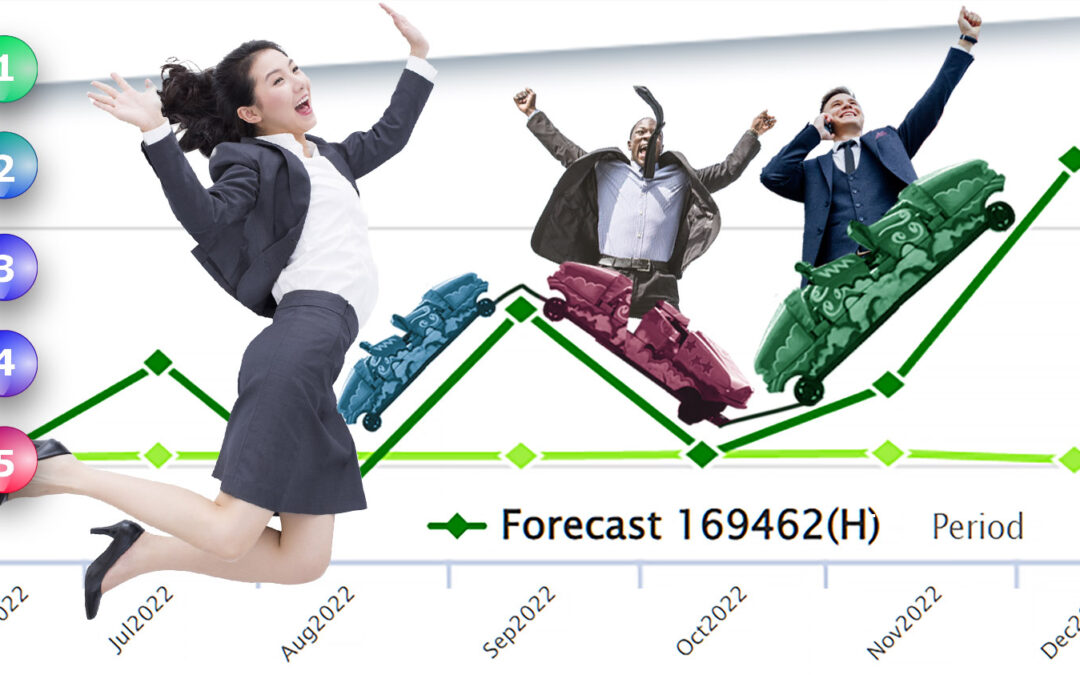Forecasting is a fully developed business process that most organizations still struggle with today. Almost everyone’s top priority is probably to be able to consistently and accurately forecast Sales, Demand, Costs, Inventory, etc. The inability to obtain a good forecast frequently has a significant business impact. Inaccurate forecasting leads to overstocking or running out, resulting in high costs and excess, impacting the bottom line and the success of the company.
A good forecast should give you enough confidence to make sound business decisions. For a more efficient forecast, consider these best practices:
- What are the most common forecasting methods, and why do they produce inaccurate results.
- How to achieve better ROI and optimal processes through scale, granularity, and agility
- How to improve forecasting accuracy
- How to use simple machine learning and artificial intelligence tools to get accurate and scalable forecasts

How much time should it take to compute statistical forecasts?
How long should it take for a demand forecast to be computed using statistical methods? This question is often asked by customers and prospects. The answer truly depends. Forecast results for a single item can be computed in the blink of an eye, in as little as a few hundredths of a second, but sometimes they may require as much as five seconds. To understand the differences, it’s important to understand that there is more involved than grinding through the forecast arithmetic itself. Here are six factors that influence the speed of your forecast engine.

Do your statistical forecasts suffer from the wiggle effect?
What is the wiggle effect? It’s when your statistical forecast incorrectly predicts the ups and downs observed in your demand history when there really isn’t a pattern. It’s important to make sure your forecasts don’t wiggle unless there is a real pattern. Here is a transcript from a recent customer where this issue was discussed:

5 Tips for Creating Smart Forecasts
Many companies use the term “smart forecasting” or “smart forecasts” without firm justification. Let’s distinguish between the Smart brand and being smart about the way you do your forecasting work. Demand forecasting is a critical part of the demand planning and S&OP process. Here are 5 tips that will help you execute your forecasts intelligently.

Supply Chain Math: Don’t Bring a Knife to a Gunfight
Math and the supply chain go hand and hand. As supply chains grow, increasing complexity will drive companies to look for ways to manage large-scale decision-making. Math is a fact of life for anyone in inventory management and demand forecasting who is hoping to remain competitive in the modern world. Read our article to learn more.

Scenario-based Forecasting vs. Equations
Traditionally, software has served as a delivery vehicle for equations. This is fine, as far as it goes. But we at Smart Software think you would do better by trading in your equations for scenarios. Learn why Scenario-based planning helps planners better manage risk and create better outcomes.

Top Five Tips for New Demand Planners and Forecasters
Good forecasting can make a big difference to your company’s performance, whether you are forecasting to support sales, marketing, production, inventory, or finance. This blog is aimed primarily at those fortunate individuals who are about to start this adventure. Welcome to the field!
Problem
Generating accurate statistical forecasts isn’t an easy task. Planners need to keep historical data continually up to date, build and manage a database of forecasting models, know which forecast methods to use, keep track of forecast overrides, and report on forecast accuracy. These steps are typically managed in a cumbersome spreadsheet that is often error-prone, slow, and difficult to share with the rest of the business. Forecasts tend to rely on one-sized fits all methods that require seasonality and trend to be added manually resulting in inaccurate predictions of what comes next
Solution
SmartForecasts ® Cloud
Accurate Demand Forecasts
Best Forecasting Methods

Imports Historical Data
What can you do with SmartForecasts?
- Run a forecasting tournament that selects the right forecasting method for each item.
- Hand-craft forecasts using several time-series forecasting methods and non-statistical methods.
- Automatically predict trends, seasonality, and cyclical patterns.
- Imports demand data from files
- Leverage ERP connectors to automatically import demand data and return forecast results
Who is SmartForecasts for?
• Demand Planners.
• Forecast Analysts.
• Material & Inventory Planners.
• Operational Research Professionals.
• Sales Analysts.
• Statistcally Minded Executives.
A Reliable and Secure Platform











